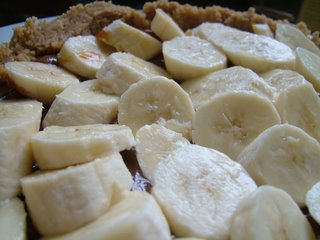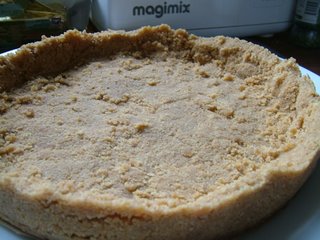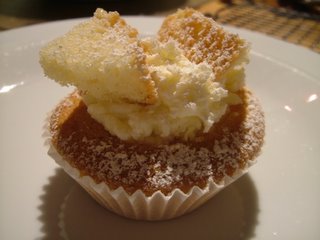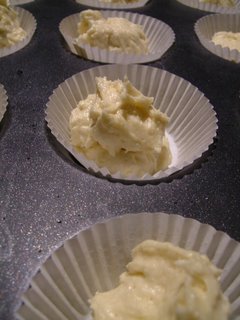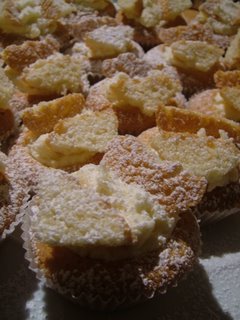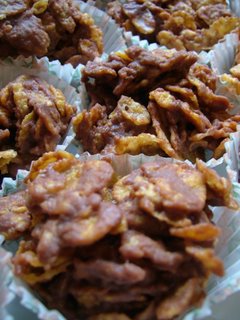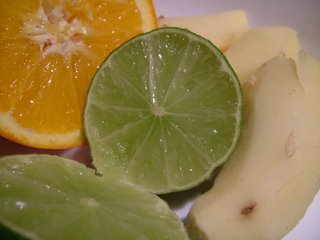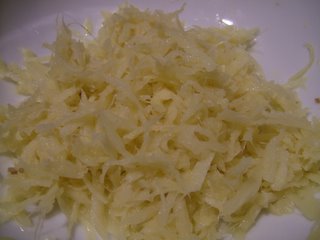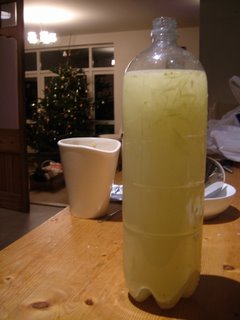 First of all, an apology for not having posted for a week and a bit. A visit from family, a series of busy evenings of unbloggable dinners (at the houses of friends who weren’t seeking Internet fame, at the University where the lights are dim and the meals a bit swillish) and finally a really, really nasty brush with salmonella all conspired to stop me posting. I’m better (and thinner – positively svelte, now I mention it) again now, and I and the seven colleagues who ate the coleslaw at the pub on Perne Road have called Environmental Health in.
First of all, an apology for not having posted for a week and a bit. A visit from family, a series of busy evenings of unbloggable dinners (at the houses of friends who weren’t seeking Internet fame, at the University where the lights are dim and the meals a bit swillish) and finally a really, really nasty brush with salmonella all conspired to stop me posting. I’m better (and thinner – positively svelte, now I mention it) again now, and I and the seven colleagues who ate the coleslaw at the pub on Perne Road have called Environmental Health in.
Cast your minds back a week and a half.
 Astute readers familiar with Cambridgeshire will have worked out by now that I live in Reach, a tiny village about fifteen miles from Cambridge, set around a large green. The village is complete with a Roman canal, a ruined Norman church (I’m looking at it out of the living room window as I type – see above for a picture taken at the end of March – the roundabout on the left is the view out of the front garden from the last week of April) and marks the start of the seven-mile Devil’s Dyke, a perfectly straight chalk earthwork which was put in as defence by Hereward the Wake’s lot. It is, you might gather, a village with a fair old bit of history.
Astute readers familiar with Cambridgeshire will have worked out by now that I live in Reach, a tiny village about fifteen miles from Cambridge, set around a large green. The village is complete with a Roman canal, a ruined Norman church (I’m looking at it out of the living room window as I type – see above for a picture taken at the end of March – the roundabout on the left is the view out of the front garden from the last week of April) and marks the start of the seven-mile Devil’s Dyke, a perfectly straight chalk earthwork which was put in as defence by Hereward the Wake’s lot. It is, you might gather, a village with a fair old bit of history.
 In 1201, King John granted a charter to the village allowing it to host an annual fair on May 1. Historically, the fair had huge significance in the region, and was a big event for those wishing to trade in livestock and the goods which had come down the Roman canal (which, in 2006, is still navigable, although it’s not been used commercially for about a century). Back then, the fair was a three-day affair, drawing visitors from all over the east of England.
In 1201, King John granted a charter to the village allowing it to host an annual fair on May 1. Historically, the fair had huge significance in the region, and was a big event for those wishing to trade in livestock and the goods which had come down the Roman canal (which, in 2006, is still navigable, although it’s not been used commercially for about a century). Back then, the fair was a three-day affair, drawing visitors from all over the east of England.
 Eight hundred and five years later, the fair is still running every year, although now it’s an old-fashioned funfair which only opens for a day, with a merry-go-round, swingboats, hoopla, a coconut shy and a helter-skelter. The local schoolkids dance around a maypole, the village is infested with morris dancers and squeezebox players, mock battles are held on the playing fields, and there’s a hogroast.
Eight hundred and five years later, the fair is still running every year, although now it’s an old-fashioned funfair which only opens for a day, with a merry-go-round, swingboats, hoopla, a coconut shy and a helter-skelter. The local schoolkids dance around a maypole, the village is infested with morris dancers and squeezebox players, mock battles are held on the playing fields, and there’s a hogroast.
 There’s food everywhere you look; excellent local ice-cream, vans full of sweets, the coconuts nobody is winning because they appear to be weighted with lead. Our very splendid local pub also has a beer tent most years. These toffee apples are particularly magnificent, and they’re a staple of the fair. To make your own, you’ll need:
There’s food everywhere you look; excellent local ice-cream, vans full of sweets, the coconuts nobody is winning because they appear to be weighted with lead. Our very splendid local pub also has a beer tent most years. These toffee apples are particularly magnificent, and they’re a staple of the fair. To make your own, you’ll need:
450 g soft brown sugar
50 g butter
10 ml malt vinegar
150 ml water
1 tablespoon golden syrup
6-8 medium-sized apples and the same number of good wooden sticks. (I’ve used pencils in emergencies – and no sticks for your toffee apple is, as far as I’m concerned, an emergency par excellence.)
Put the sugar, butter, vinegar, water, and syrup into a large pan with a heavy base. Stir over a low heat until the sugar has dissolved, then raise the temperature and then boil until the temperature reaches 143°C (soft crack on your jam thermometer). At this temperature a drop of the mixture in cold water will separate into hard threads which are not brittle.
Push the sticks into the clean apples. Dip the apples into the toffee and swirl them around for a few seconds until they are covered in the toffee. Leave to cool on a sheet of greaseproof paper.
 I’ll leave you with a photo of the fair in the 1930s. See those people sitting on the verge on the left? These days, that’s my front garden.
I’ll leave you with a photo of the fair in the 1930s. See those people sitting on the verge on the left? These days, that’s my front garden.
The apples are falling off my trees as fast as I can core, peel, slice and bag them for freezing. At this time of year, when you’ve apples galore, try recipes like this which are extremely generous with the fruit; a cake crammed with them will be darkly moist and juicy.
Place all the cake ingredients except the apples in a large bowl, and mix thoroughly using a hand blender or a wooden spoon and elbow grease. When the ingredients are well blended, add the apple chunks to the bowl and combine with the other ingredients. Pour everything into a greased springform tin, and bake at 180° C for an hour. After an hour, test with a skewer (if the skewer comes out sticky, the cake is not finished). When the cake is cooked, set aside to cool.







